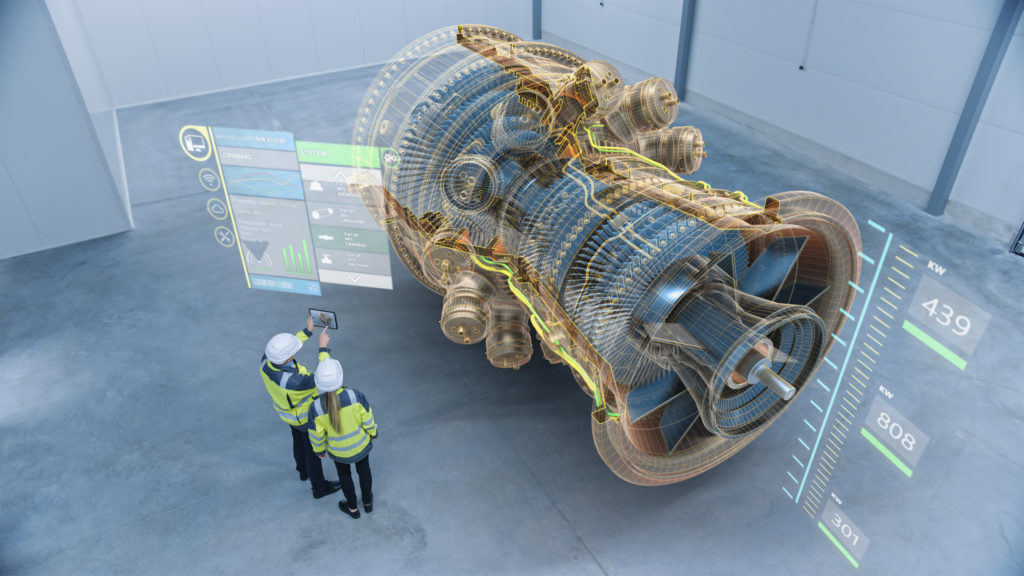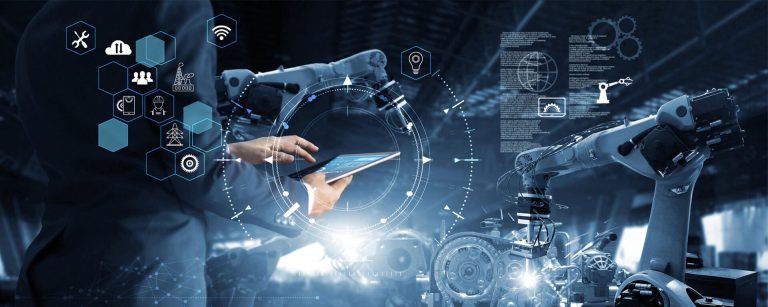Maintenance practices are undergoing a profound transformation in times of cutting-edge technologies and innovative strategies. From predictive analysis to the integration of the Internet of Things (IoT), the trends that are reshaping industrial maintenance are not just about keeping the machinery running—they are about optimising operations, reducing downtime, and driving sustainable growth. This is why being aware of these maintenance trends that improve process scalability, quality and effectiveness is crucial to adapting to often changing environments.
According to the 2024 McKinsey Global Institute report, over time, the structural changes affecting both Europe and the US will continue to shape the labour demand. First and foremost, technological developments, particularly artificial intelligence (AI), are anticipated to increase productivity growth and modify labour demand. The need for labour will also shift due to structural issues like the ageing workforce, growing healthcare needs (which are more prominent in Europe), and new priorities like climate change. Certain trends that were also accelerated by the epidemic are probably here to stay, such as the shift to remote work and the expansion of e-commerce.
Emerging Technologies Dominating the Maintenance Industry
Many companies benefit greatly from the use of technological and productivity improvements. This can be seen in the range of equipment maintenance processes, which are increasingly aided by IT, cloud computing, Big Data, IoT and vastly growing AI.
“Now, as Europe looks ahead, automation, AI, and other trends present opportunities for higher productivity growth but with faster occupational transitions. Business leaders and policymakers will face critical choices on how much to embrace technological change and investment while training and redeploying workers into the jobs of the future.”
McKinsey Global Institute, A new future of work: The race to deploy AI and raise skills in Europe and beyond
Top 5 Trends in Industrial Maintenance
1. Immersive Technologies
Virtual and augmented realities (VR and AR) are becoming increasingly common in the workplace, allowing workers to see and do things they could not do before. From next-gen virtual training to remote maintenance, many industries are adopting these technologies.
Additionally, companies can use VR and AR to visualise the physical world in new ways, using 3D models of equipment and processes to get a better understanding of how to fix problems.

2. Additive Manufacturing
The primary goal of maintenance is to ensure that all production-related gear and equipment are always running at maximum efficiency. Industries often reach for additive manufacturing, or 3D printing, which is becoming increasingly popular in both industrial and consumer settings. Using 3D printers helps create parts for various uses, such as machine components, replacement parts, and prototypes. It is already utilised in urban transportation, to create 3D-printed houses or even to replicate human organs!
“3D technology is predicted to be a highly disruptive force within the global manufacturing industry. The global additive manufacturing market is expected to shift from prototyping to mass production of parts and accessories. By 2030, it is predicted that additive manufacturing technologies will enable companies to produce finished products on a large scale.”
Statista Research Department, Additive manufacturing projected global market growth 2020-2026
3. Industrial Internet of Things (IIoT)
IoT in industrial sectors helps manufacturers in connecting and monitoring the various components of their operations, allowing them to get real-time knowledge. Manufacturers may use this data to adjust, optimise, and improve any aspect of their production process.
IIoT is moving the sector forward by using smart sensors and cloud connectivity powered by the internet. Companies are using IIoT capabilities to improve safety, save money, streamline manufacturing, and even create new products.
“IIoT enables companies to unlock 73 percent of the data which is otherwise not used for analysis. IIoT enabled predictive analytics to automate the translation of data into contextual data, which when applied to an AI system, enhances productivity, increases asset life by 20-25 percent, and reduces maintenance costs by 35 percent.”
ABB, IIoT for Predictive Maintenance & Process Optimisation
4. Data Collection and Analytics
Facilities are constantly expanding their data store, allowing for more precise modelling, effective forecasting, and novel data use and analysis. A lot of data comes from sensors, they are outputs of devices that detect and respond to input from a physical element. Wireless sensor networks help monitor and control conditions at various places, e.g. temperature, pressure, wind speed and direction, vibrant intensity, etc. Sensor data is becoming an increasingly important part of the IoT environment.
Leaders have to be innovative and prepare for changes to find benefits for their organisations. Predictive maintenance and predictive analytics can help a manufacturing company prevent problems from occurring in the first place and save money on maintenance and downtime while also prolonging the life of its equipment.

5. Maintenance as a Service (MaaS)
By transforming maintenance from capital to operational expense through a subscription-based model, MaaS is transforming the maintenance sector and giving businesses access to cutting-edge technologies and specialised knowledge without requiring significant internal investment.
To reduce downtime and maximise asset performance, this strategy makes use of predictive and preventive maintenance powered by real-time data and AI. Maintenance equipment manufacturers can benefit from software solutions, such as computerised maintenance management systems (CMMS) and hardware solutions, such as industrial robots and other equipment, to automate maintenance. In addition, MaaS ensures sustainability and compliance and provides scalability, flexibility, and increased focus on core business operations, which will ultimately change how businesses manage and carry out maintenance plans.
How to Prepare for Changes in Industrial Maintenance?
Nowadays, cutting-edge technologies play a big part in many industries and help improve the efficiency and productivity of manufacturing and maintenance. However, not all companies have the necessary skills and knowledge to implement new technologies. To prepare your facility for changes and reshape with trends, engineers and leaders have to be ready to embrace and adapt to new technologies. They have to make their workforce ready for changes and the process of introduction and adaptation to advanced technologies.











